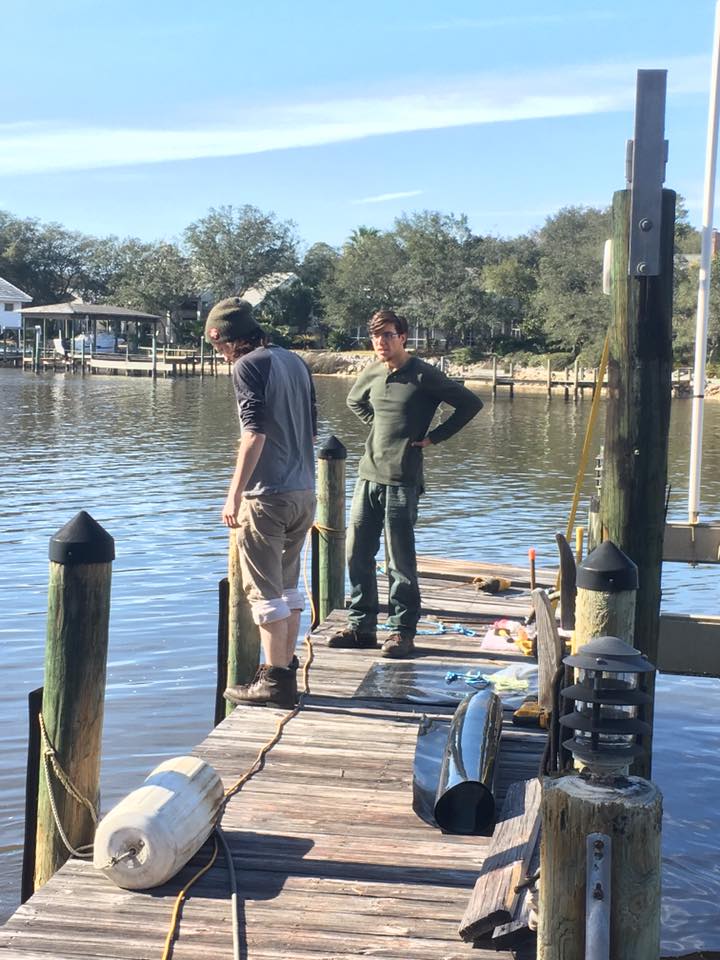Reliable Dock Repair Work Techniques: Ensuring Architectural Stability
Making sure the structural stability of docks via effective fixing techniques is extremely important for the longevity and safety and security of aquatic facilities. This includes a multi-faceted strategy starting with thorough evaluations making use of advanced modern technologies like finder equipment and from another location ran lorries (ROVs) to find both visible and hid damages. Consequently, choosing the right repair work products, such as corrosion-resistant alloys and composite materials, is vital for durability. Structural reinforcement methods, consisting of the execution of cross-bracing systems and load-distribution plates, play a vital duty in mitigating tension factors. Nonetheless, the significance of these strategies becomes noticeable when exploring innovative repair work techniques and preventative upkeep approaches.
Analyzing Dock Damage
Analyzing dock damages is a vital initial step in making certain the structural stability and safety and security of any type of docking center. This preliminary evaluation includes an extensive assessment to recognize both concealed and noticeable problems. Trick aspects to take a look at include the dock's foundation, pilings, outdoor decking, and hardware. Each part must be looked at for indicators of wear, rot, deterioration, or other forms of degradation that could endanger the structural stability.
Architectural engineers or qualified inspectors generally do these assessments making use of specialized devices and methods. Undersea inspections might utilize sonar equipment or from another location operated vehicles (ROVs) to spot submerged damages. Over water, aesthetic evaluations are matched by utilizing wetness meters and various other analysis tools to uncover underlying problems not immediately visible to the nude eye.

Deciding On Repair Materials
Selecting the proper repair products is a critical step in the dock reconstruction process, one that directly influences the durability and efficiency of the repaired structure. Material choice must be driven by aspects such as environmental conditions, load-bearing needs, and compatibility with existing dock parts.
Along with wood, composite materials are increasingly popular due to their durability and low maintenance needs. Compounds, generally made from a blend of plastic and wood fibers, provide superb resistance to rot, insects, and UV damage. For metal docks, picking corrosion-resistant alloys such as galvanized steel or marine-grade light weight aluminum is necessary to prevent corrosion and make certain structural stability in saline water conditions.
Epoxy materials and marine-grade sealants are indispensable for fixing cracks and securing joints, supplying a waterproof obstacle and improving the dock's overall strength. By diligently picking premium products, dock repair services can achieve resilient results, consequently guarding versus future deterioration and guaranteeing secure, reputable use.
Structural Support Techniques
Effective architectural support techniques are vital in making sure the security and durability of dock repairs. One fundamental method includes the use of steel or composite reinforcement bars (rebar) within concrete frameworks. Rebar provides additional tensile toughness, preventing splits and distributing lots much more evenly. This method is particularly efficient for docks exposed to hefty lots or rough ecological conditions.
An additional crucial technique is the application of fiber-reinforced polymers (FRP) These materials use high strength-to-weight ratios and exceptional resistance to corrosion, making them excellent for strengthening wood or concrete anchors. FRP can be used in strips or sheets and bound with epoxy resins to enhance architectural integrity.
Supporting and anchoring systems additionally play a vital function in structural reinforcement. Cross-bracing, using metal or wood light beams, can neutralize lateral pressures, reducing swaying and motion. Securing systems, such as helical piers or driven piles, give a steady structure by moving lots to deeper, much more stable soil layers.
Lastly, the combination of load-distribution plates can help disperse weight more equally across the dock's surface area, alleviating localized anxiety factors. These techniques jointly guarantee that anchors remain secure and robust, efficient in withstanding the rigors of their operational atmosphere.
Advanced Repair Service Techniques

Another advanced method entails underwater welding, which enables fixings to be carried out without the demand to dewater the location. This technique is particularly beneficial for attending to structural concerns in immersed dock components, making sure very little disturbance to operations. Boosted welding methods, coupled with robot systems, supply precision and reliability, therefore extending the life expectancy of the dock.
Additionally, cathodic protection systems are executed to stop deterioration in metallic dock frameworks. By utilizing sacrificial anodes or amazed existing systems, these strategies effectively mitigate the electrochemical procedures that bring about material deterioration.
Finally, progressed monitoring innovations, such as structural health and wellness monitoring (SHM) systems, provide real-time data on the problem of dock frameworks. These systems allow aggressive upkeep and timely treatments, inevitably ensuring the long-term structural stability of the dock.
Maintenance and Avoidance
Maintenance and avoidance are basic ideas that underpin the durability and safety of dock structures. Regular inspections are extremely important, enabling early discovery of damage, potential weak points, and ecological impacts. A positive technique, entailing routine look for rust, rot, and structural changes, reduces expensive fixings and lengthens the dock's operational life.
Preventive measures must include using protective coatings to metal elements to guard versus rust and utilizing treated wood to resist degeneration. Furthermore, making sure proper water drainage and ventilation can avoid water build-up, which is a common source of architectural destruction. Incorporating quality products and adhering to manufacturer guidelines during building and fixing stages also play crucial roles in boosting durability.

Training workers in dock maintenance best techniques makes certain regular application of preventative site link actions. Leveraging technological advancements, such as go to this site drones for evaluations and sensing units for real-time tracking, can further enhance upkeep efforts. By prioritizing upkeep and prevention, dock proprietors can make certain architectural honesty, operational safety and security, and cost-effective management over the dock's lifespan.
Final Thought
In verdict, maintaining the structural integrity of aquatic facilities necessitates detailed dock repair methods. Extensive inspections making use of sophisticated tools uncover both noticeable and hid damages, while the option of appropriate repair service products boosts durability. Implementing structural reinforcement methods addresses stress and anxiety factors effectively. Advanced repair techniques, paired with normal upkeep methods, guarantee the dock remains risk-free and operational under varied environmental problems. Adopting these methods substantially extends the life expectancy and performance of marine framework.
Making sure the architectural integrity of docks via efficient repair work techniques is vital for the long life and safety and security of aquatic facilities.Choosing the appropriate repair service materials is an essential action in the dock repair procedure, one that straight influences the long life and efficiency of the repaired structure.Efficient structural support techniques are important in guaranteeing the security and long life of dock repairs. By prioritizing maintenance and prevention, dock owners can make certain structural stability, operational safety and security, and affordable administration over the dock's life-span.
In verdict, preserving the structural integrity of marine facilities necessitates comprehensive dock fixing methods.